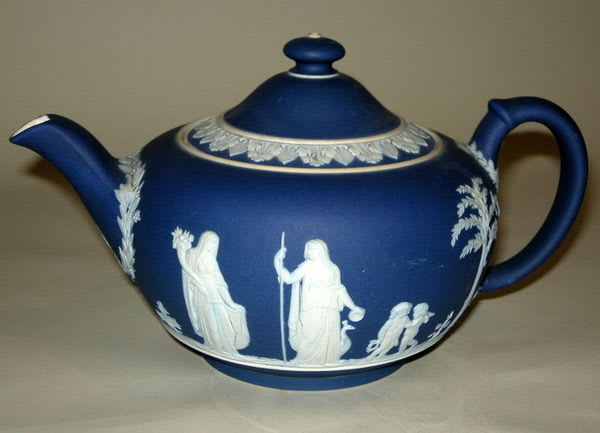How To Identify and Value Wedgwood China – A Handy Guide
When it comes to antique pottery and china, few names can compete with Wedgwood.
When it comes to antique pottery and china, few names can compete with Wedgwood. Though the company is British, its designs and excellent craftsmanship have made it a known name around the world ñ and a popular brand for collectors.
How old are they?As Kovels explains, the Wedgwood company was established back in 1759 by Josiah Wedgwood. According to Antique Marks, many of his descendants were also very involved in the company, which eventually merged with Waterford Crystal in 1987 and then became known as Waterford Wedgwood. As we’ll talk about below, however, the marks on different pieces can offer a lot of assistance in dating specific pieces.

Photo credit: Antiques.com
Why did they become popular?Initially, according to Apartment Therapy, Wedgwood’s designs grew in popularity because of his innovative approaches to manufacturing and customizing pieces. He called on advanced orders via catalogs and traveling salesman so his supply always matched demand, but also offered the option to customize different pieces ñ e.g. the same pieces with different designs on them.
Not only did this appeal to the middle class, but royalty eventually took notice of his excellent craftsmanship and designs and also became a fan. In 1765, according to Antique Marks, Queen Charlotte was so pleased with the pieces that Wedgwood had crafted for her, that she gave him permission to call them ìQueens Wareî ñ and the queen’s support really boosted Wedgwood’s reputation and sent sales booming.

Photo credit: eBay
Are they tough to find?Yes and no ñ it depends on what you’re looking for. Wedgwood on the whole is not difficult to find, but specific pieces ñ especially pieces with rare maker’s marks or those that were produced in limited quantities ñ are tougher to find. As with many popular antiques, there are also tons of clever reproductions out there, so you’ve got to be diligent about checking for authenticity.
How much do they cost?Prices can vary depending on the age, color, pattern, and condition of the piece. An entire set of dishes or a rare vase could cost around $1,000 or even more, while a set of plates or set of saucers might only cost a few hundred. Serving plates, pitchers, coffee pots, gravy boats, and the like ñ especially newer, modern pieces ñ can often be less than $100.

Photo credit: British China tableware
What are some identifying features?
- Maker’s mark:If your piece has a maker’s mark on the bottom, this can be a huge help in discovering when it was made and whether it’s a reproduction. Check out Antique Marks’s collection of Wedgwood marks or The Potteries (also here) for help in figuring out which mark corresponds to which time period. Unfortunately, not all pieces ñ especially the early ones made in the 18th century ñ have these marks, so lack of maker’s mark doesn’t mean that the piece isn’t authentic Wedgwood.
- Papers of authentication: eHow explains how these can be very important in separating real from fake, so ask about them if you’re interested in a specific piece.
- Design: Wedgwood had several very popular patterns, according to eBay ñ including Jasperware that features Greek or Roman-inspired scenes, Queens Ware embossed with ivy or similar print, and tons of different patterns for china. Wedgwood produced pottery, bone china, and also black basalt stoneware ñ so you’ll even find lamps, brooches, and statuettes sporting the Wedgwood name. You can also search the Wedgwood Museum’s collection.
If you want to collect something timeless and classic, look no further than Wedgwood.
SKM: below-content placeholderWhizzco for DOT

